Why Jira and Hiptest?
Before talking about the tools, let's take a step back. As a product manager, when having new features to prioritize and develop, I always challenge the team with 3 basic questions: WHY, WHAT and HOW.
When it comes to manage planning, Jira is definitely one of the best option in the market. It gives you the ability to plan and track your project development progress. It basically helps your team answering the HOW. But planning is just one side of the coin. I see so many teams obsessed by the process and metrics that only measure planning efficiency.
What's the value if you develop something that is worthless? Are you on track to deliver a feature that nobody want?
Hiptest helps your team to answer simple but not easy questions: WHY and WHAT. Before planning any features into a sprint we should ask the team to define WHAT the feature should do and WHY we are supposed to implement it. This is the test first approach (BDD & ATDD) that we promote at Hiptest.
The Hiptest platform enables all the team (including POs, developers and testers) to describe the feature's behaviors and to define acceptance criteria. Apart from defining more precisely the WHAT, you should also take this opportunity to create a shared understanding of the benefits and impacts of the feature (the WHY).
Once all your team is aligned on WHY, WHAT and HOW then you will reach development at the speed of awesome :)
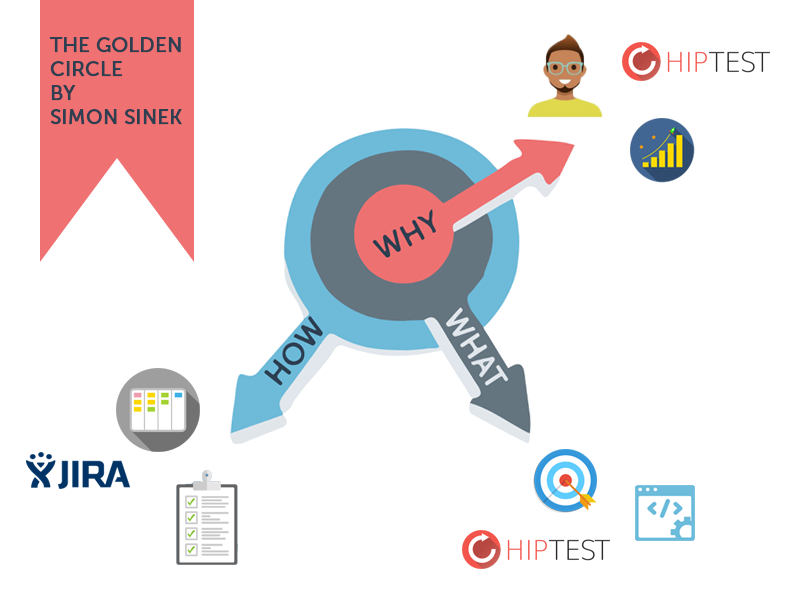
Ready? Let's GO.
Define your features
In order to use both Hiptest and Jira, you have a simple 2 steps setup to do. No complex synchronisation or data duplication: the integration is flexible and real time!
Once created, you can link any Jira user story from your backlog to a feature in Hiptest. So, let's pickup a feature that the team want to deliver during the coming sprint.
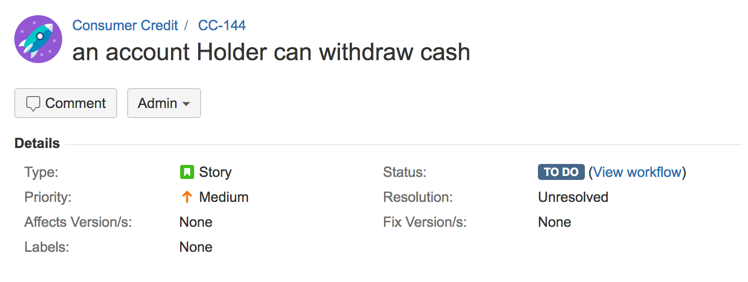
We'll start describing this feature in Hiptest by defining precisely the role and benefits. Basically we should answer: Why do we develop this feature? This is typically discussed during the 3 amigos session if you use Behavior Driven Development.

During this session that gathers all the important project stakeholders, we should also define the expected behavior of the feature. What it is about?
To answer this question, we nail down the different use cases of the feature into one or multiple scenarios. Hiptest helps you to describe the behavior step by step using a constant business terminology.
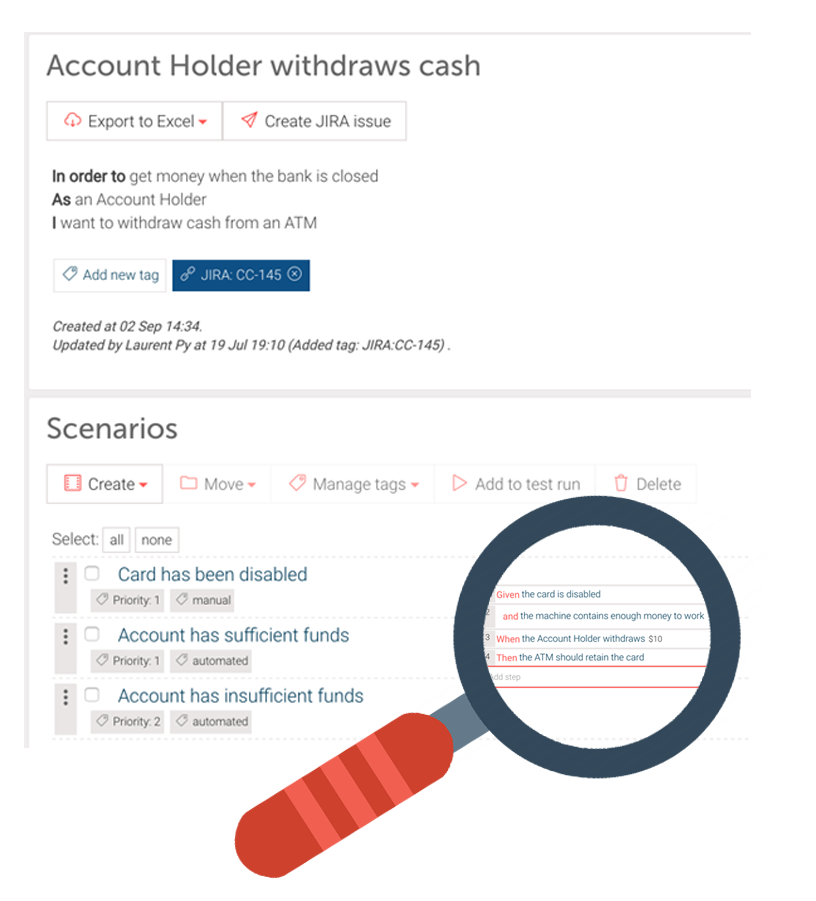
Now we have created a shared understanding of this feature. The scenarios become part of the definition of done. The developers will be able to implement the feature with a clear guidance and that will make the development process much more efficient.

Automate your tests and get real time feedback in Jira
How to make sure the implementation meets the business expectations? Well, as we have defined previously the acceptance criteria and scenarios, we just need to execute these checks.
Hiptest helps you automate your tests and keep track of your test execution. All the data coming from manual test runs as well as automated test runs will be visible in real time in Jira.
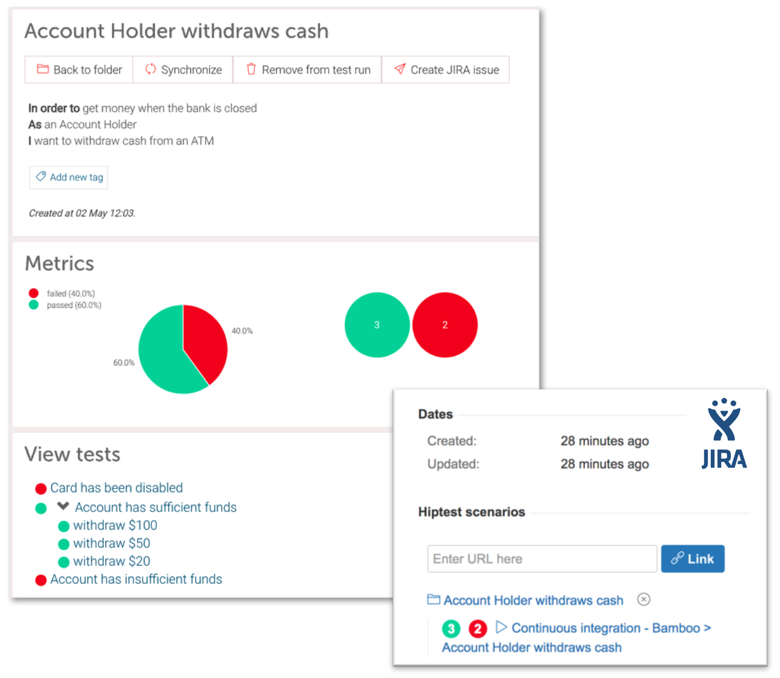
If you have a failed result at some point, you'll also have the ability to create a Jira issue directly from Hiptest.
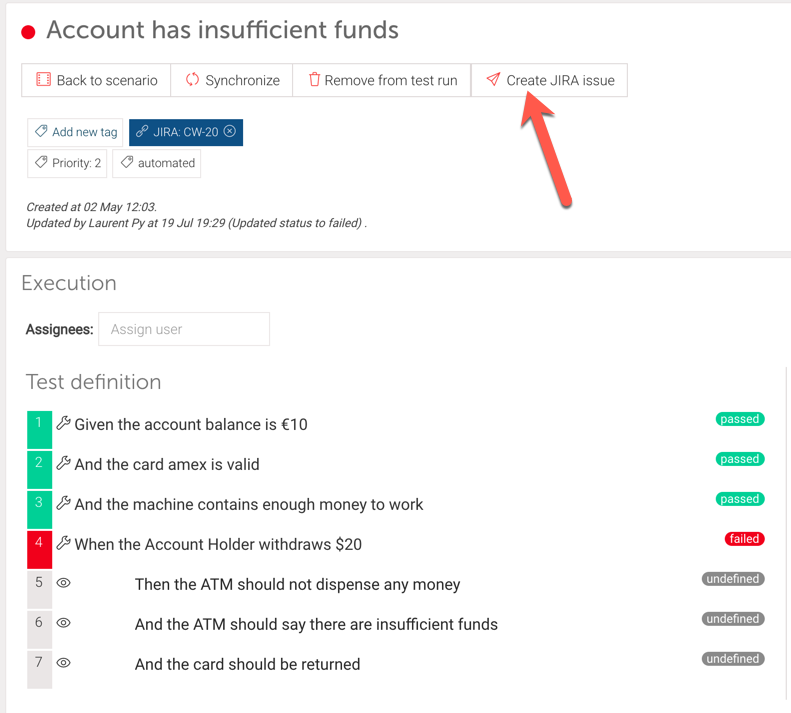
Measure the progress with traceability matrix
At any time during your sprint, the traceability matrix report allows you to analyze the test coverage and test results of your user stories. And if you use continuous integration (CI) & continuous delivery (CD), it gives an insight on which features have been delivered and which ones are still work in progress.

Now, tell us more about your team collaboration using Hiptest and Jira. We'll be happy to learn from you!